I’m sooo far behind on our blog. Sorry.
Anyway, between their windscreen drama, ATM trips to get cash and Florence’s infected cuts to knees and hands (from a morning jogging fall), Frans & Florence were having the sort of fun that I thought only only Helene & I regularly experienced.
Since the Land Rover had been behaving extremely well for the last couple of months, I’d be lying if I said I wasn’t enjoying our break from our usual ‘dramas’.
Florence and Flo’s dramas continued for the last few days we were with them in Lilongwe. They made 4 trips to the Mozambique embassy to get the visas for the next part of their trip:
1st visit, they were turned back from the gates because Frans was wearing knee-length shorts instead of trousers and Flo had bared shoulders;
2nd visit, they weren’t let in because she had open-toed shoes;
3rd visit (despite having borrowed a pair of Helene’s shoes) still no entry – the place had closed for a half-day.
On the 4th visit they finally managed to actually enter the gates.
All of this just to collect their application forms.
We left them to wait 3-4 days for their application to be ‘considered’ and, from Woodlands Lodge, headed north 300 km up the lake to Ngala Lodge, our first stop on our way up to Chitimba Camp. Ngala is a very peaceful location with beach camping on the 350 mile long, 52 mile wide Lake Malawi.
View From The Penthouse:
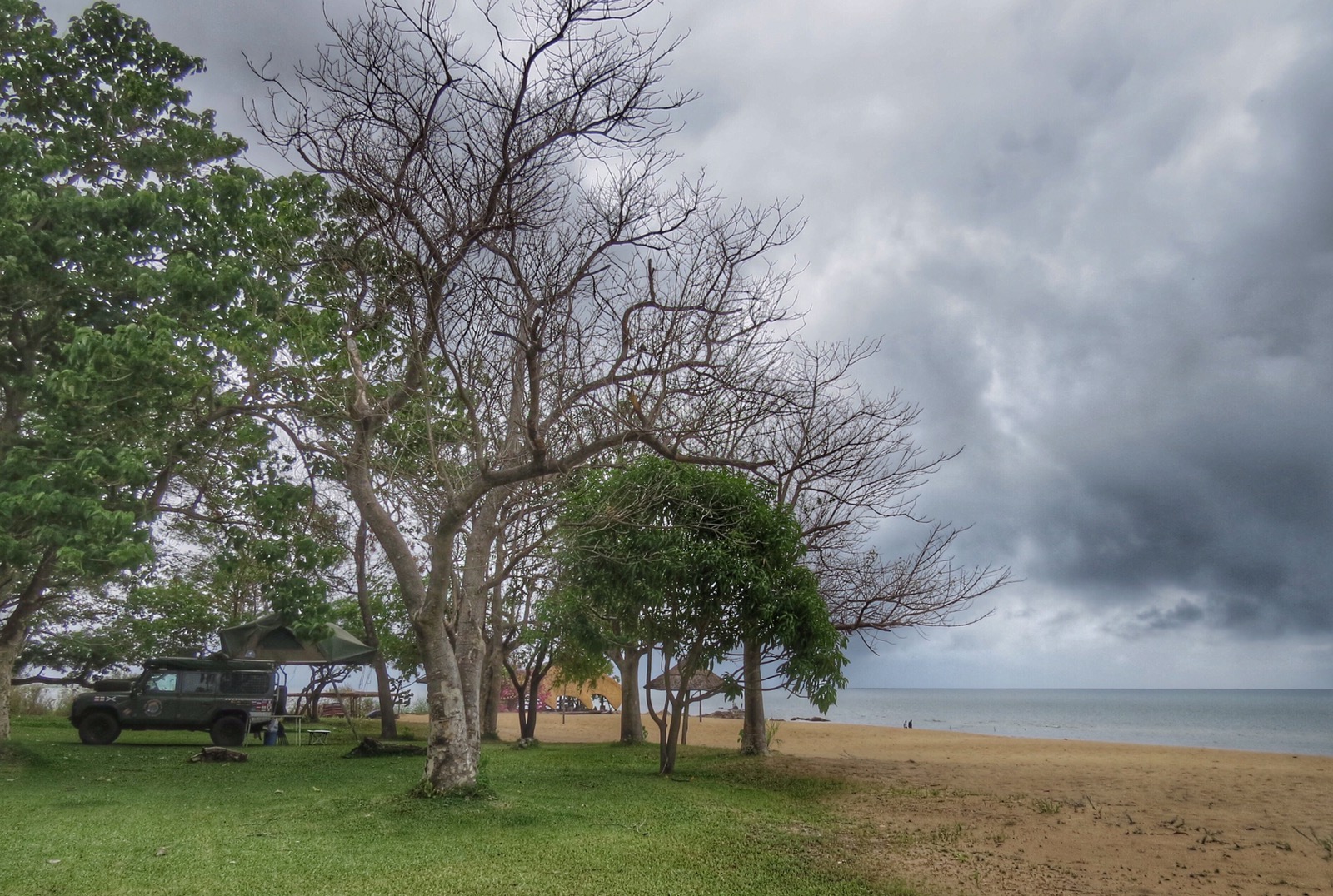
The camping area faces directly east and, providing you’re up and about from around 4.30am, provides a wonderful sunrise.
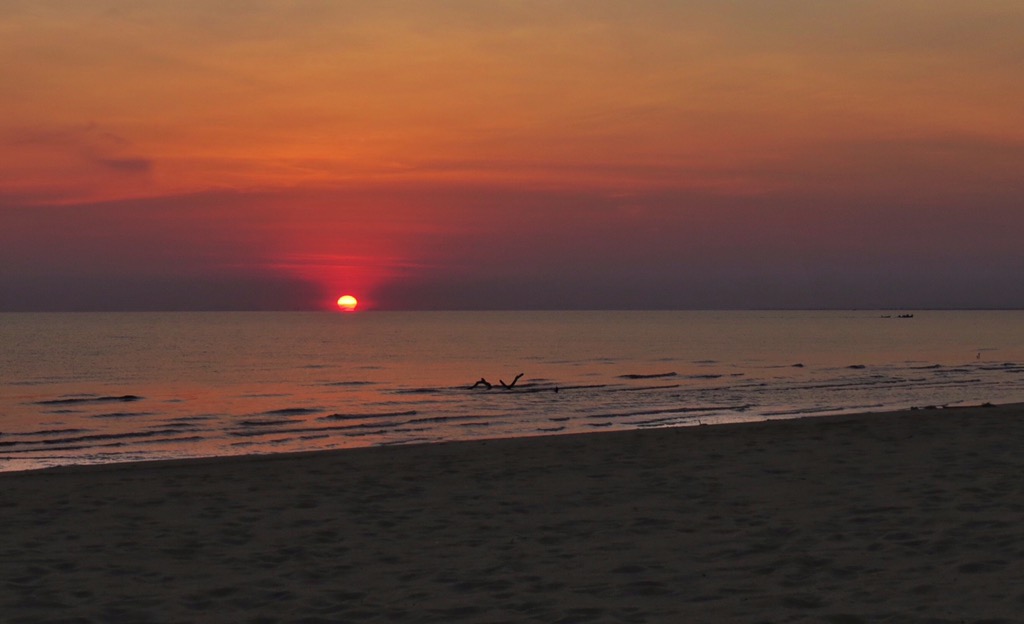
Being one of the 4 poorest populations in the world, it is the lucky Malawians who actually live in close proximity to the lake. Many people rely solely upon Lake Malawi for everything from drinking water to laundry.
For the majority of people here, fish is often the only source of protein with which they can supplement their daily diet of Nsima (cassava flour in water, boiled to a Play-Doh texture) & beans.
Fishing is by far the most popular activity, but their are no trawlers here – everyone uses whatever means they can, from bamboo poles with fixed lines, to dug-out canoes.
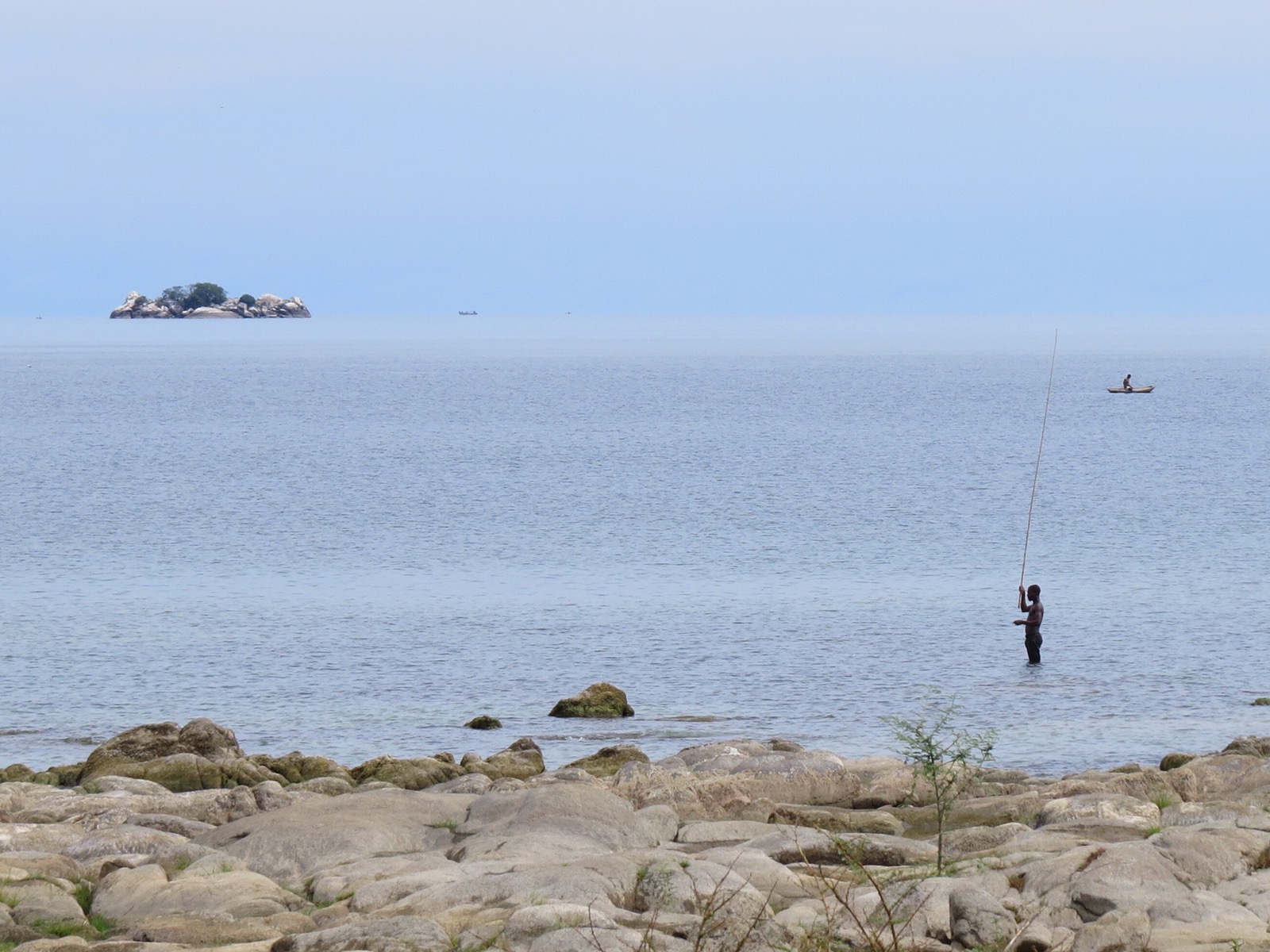
Overnight there is usually a 10-15km long string of lights spread out on the lake, anywhere between 7-20km offshore. There are a few people on the overland tour trucks (often pretty gullible, and occasionally not even sure which country they’re in) who have gone home believing that the lights are from the construction teams building a bridge across to Tanzania!
In fact the lights mark the night fishermen in their small boats. They use bright lamps connected to car batteries to attract fish to their lines and hand-thrown nets, bringing their catch home from 4am, singing and drumming on their canoes to let the villagers know they’re on their way.
Once they’re back, they often set up for a spot of close-in fishing before retiring to bed. They row a boat out from the beach in a wide diameter arc, playing out a net and then arriving back on shore only 50m from where they started. Then they enlist the help of local lads to haul the net in (a small share of the fish being the wage involved).
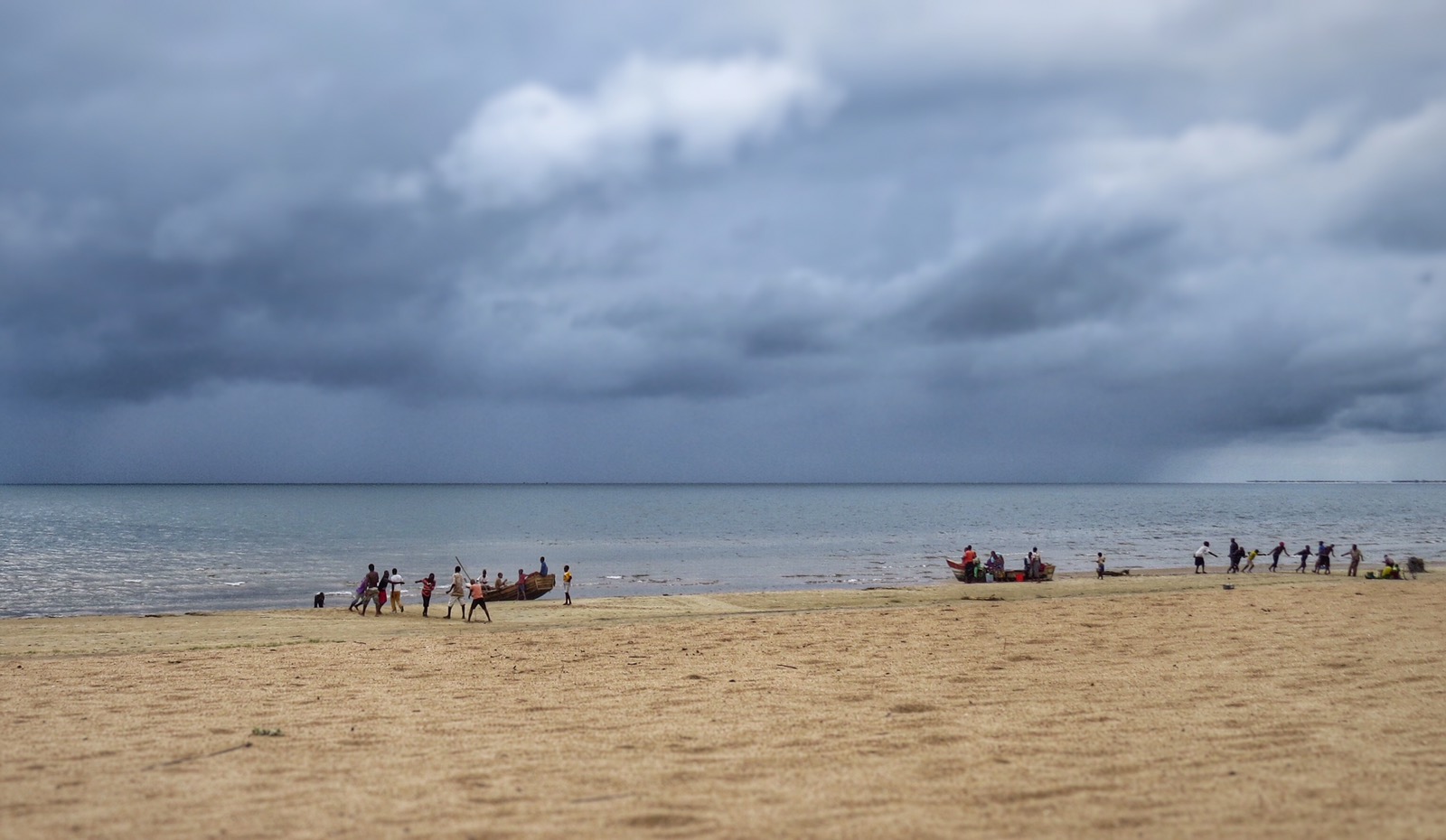
Only the wealthiest fishermen can afford to fish in this way. Many months of income are invested into the cost of the 2km of rope that the small net in the centre is strung from.
The boys earn their breakfast by hauling it in by hand…
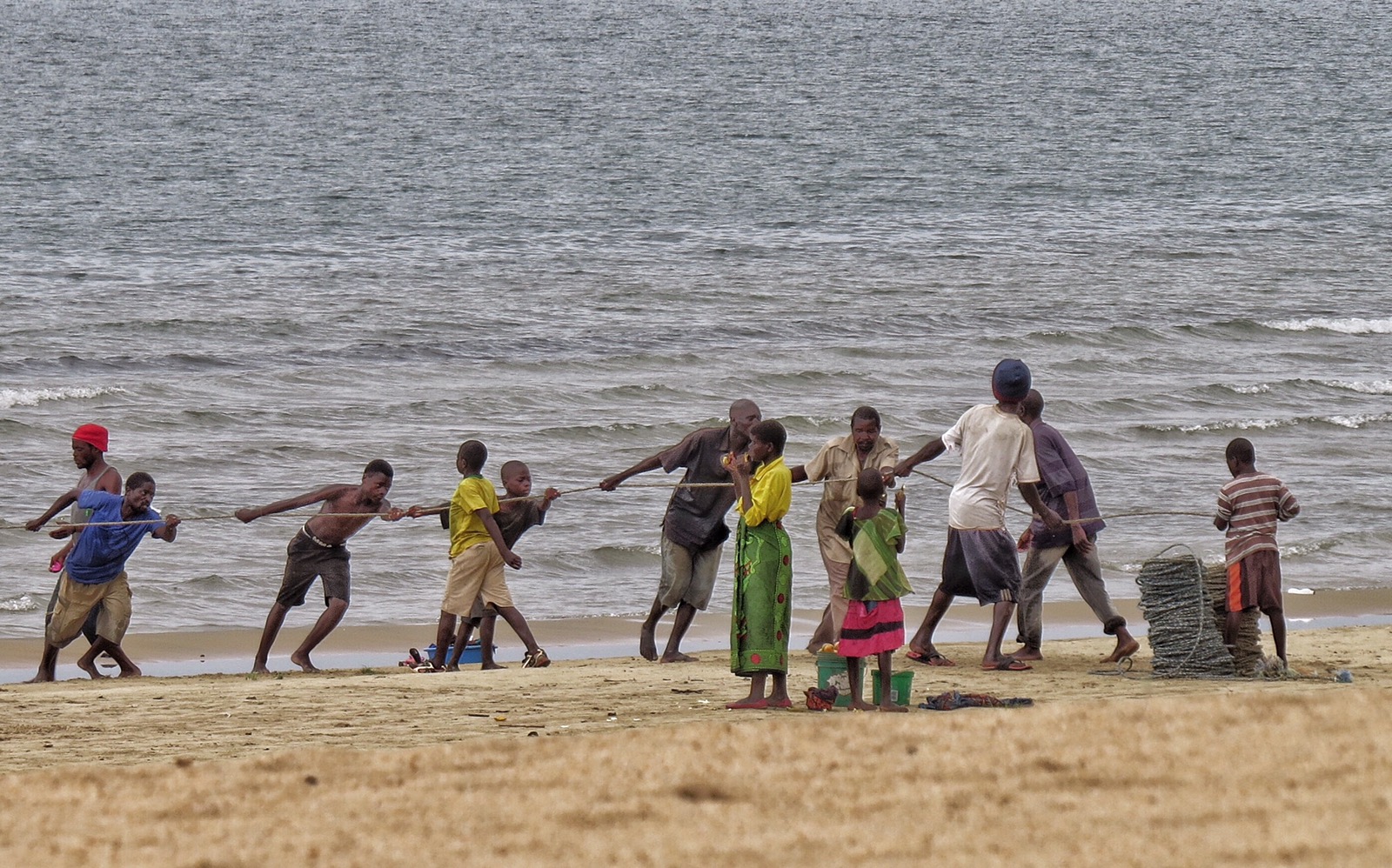
…although some of the younger lads just sit around daydreaming about how they’ll have their own boats when they grow up.

As the small catch is brought ashore, women from the local village arrive to start haggling over the price and the best of the fish.

We had intended to stay at Ngala for a few nights ($10 each camping, but expensive set-dinner at $18). However, a terrific rainstorm encouraged us to move on after two nights, only 70km or so up the lake to Chinteche Inn.
On the way to Chinteche, we dropped into a new lakeside Lodge that we had heard rumours about.
It’s British owners have been building it for 7 years and, by coincidence were having a private launch / opening party later that day. Nevertheless, owner / builder Russell took time out from his last minute preparations to show us around – from the battlements…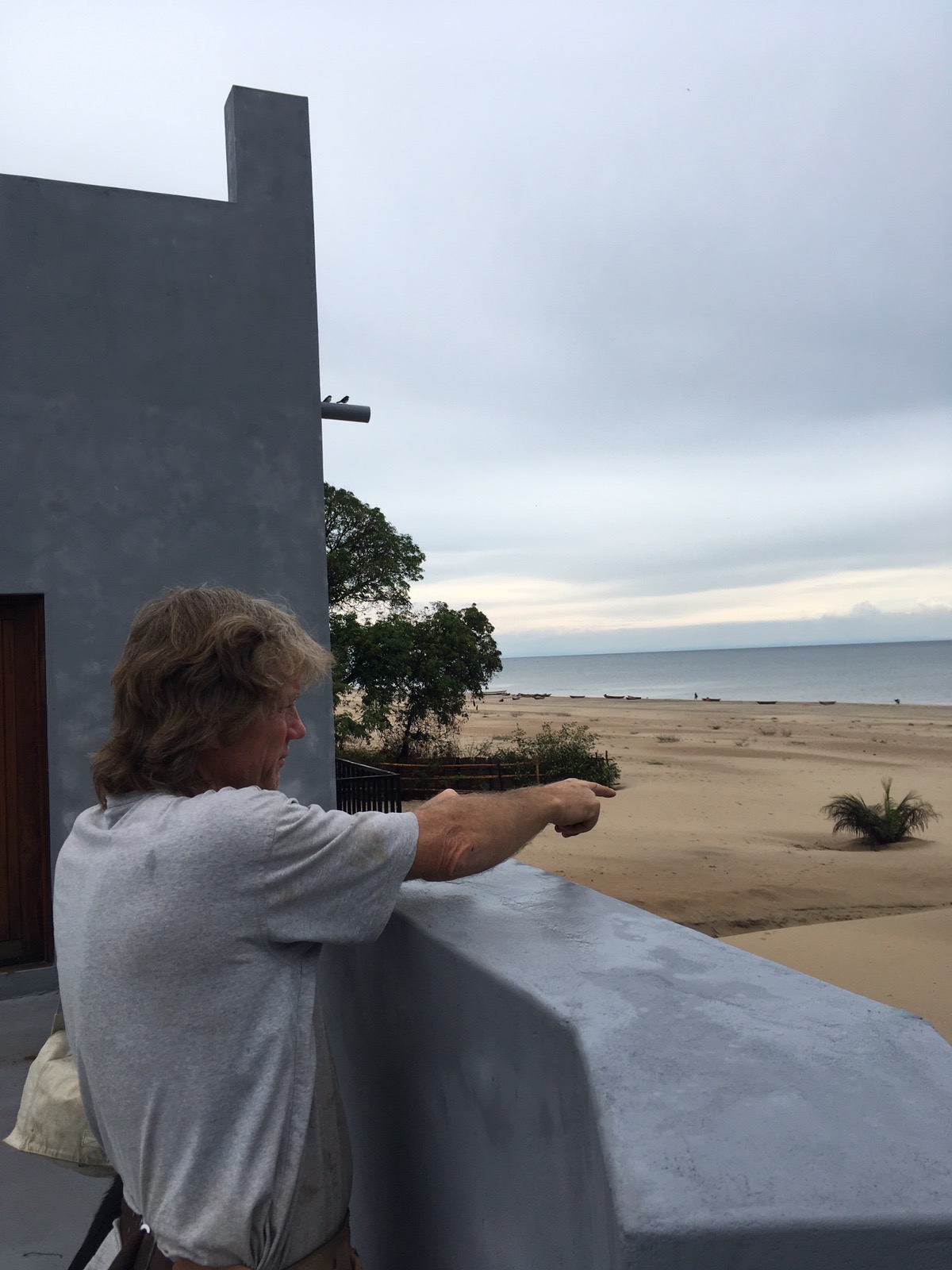
The location on the lakeshore is beautiful – as it is for so many camps in Malawi. However, complete with turreted rooms / suites, a drawbridge and a banqueting hall, Kachere Kastle is not your typical African Lodge.
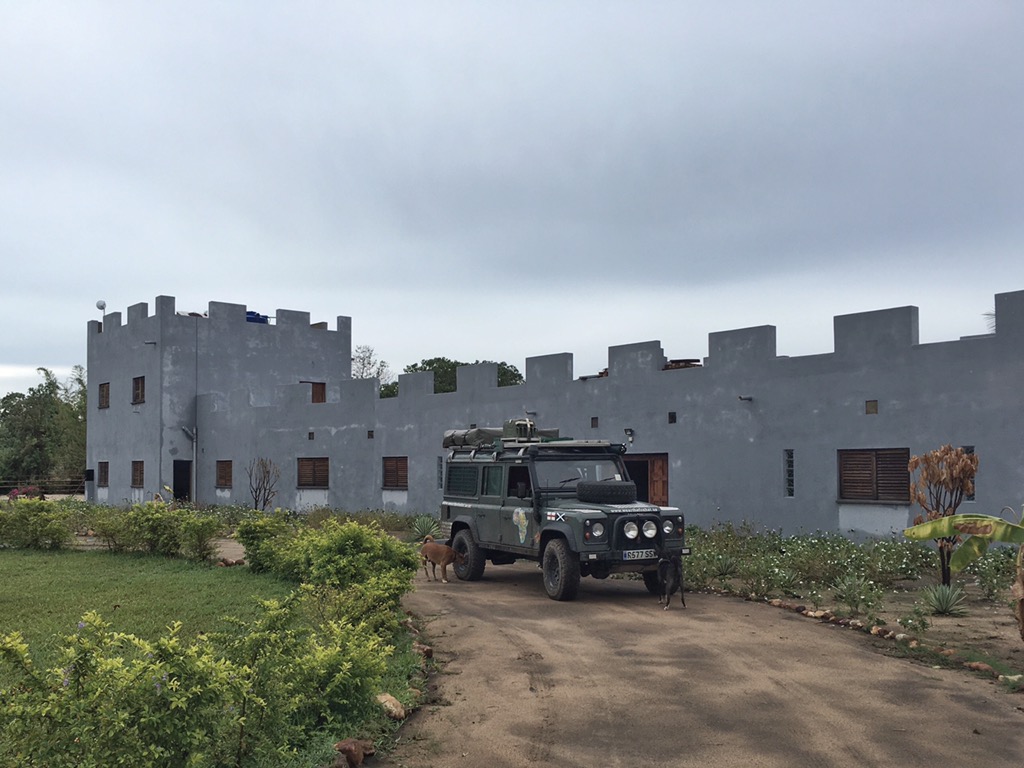
At Chinteche Inn we again camped next to the lake ($10 each). A couple of lazy days in the sunshine, watching the fishermen and being taught by barman Charles how to play Bao (a game a bit like droughts / chequers, found right across Africa).
We slept under the mango trees, although fortunately not directly under. Death by mango would not be entirely out of the question when some of these huge, heavy fruits ripen and fall to the ground. Throughout the night we’d hear them thudding to the ground. Each morning we’d wake to at least 30-40 large fruits lying at the foot of the car.
A great deal less welcome than having wonderful fresh mangos fall into your lap are the infamous Malawi Lake Flies. Best observed from a distance of a least 3-10 kilometres, huge swarms of the flies can occasionally be seen patrolling up and down the lake in what appear to be huge towering schooners, tacking and jibing at the whim of the breeze.
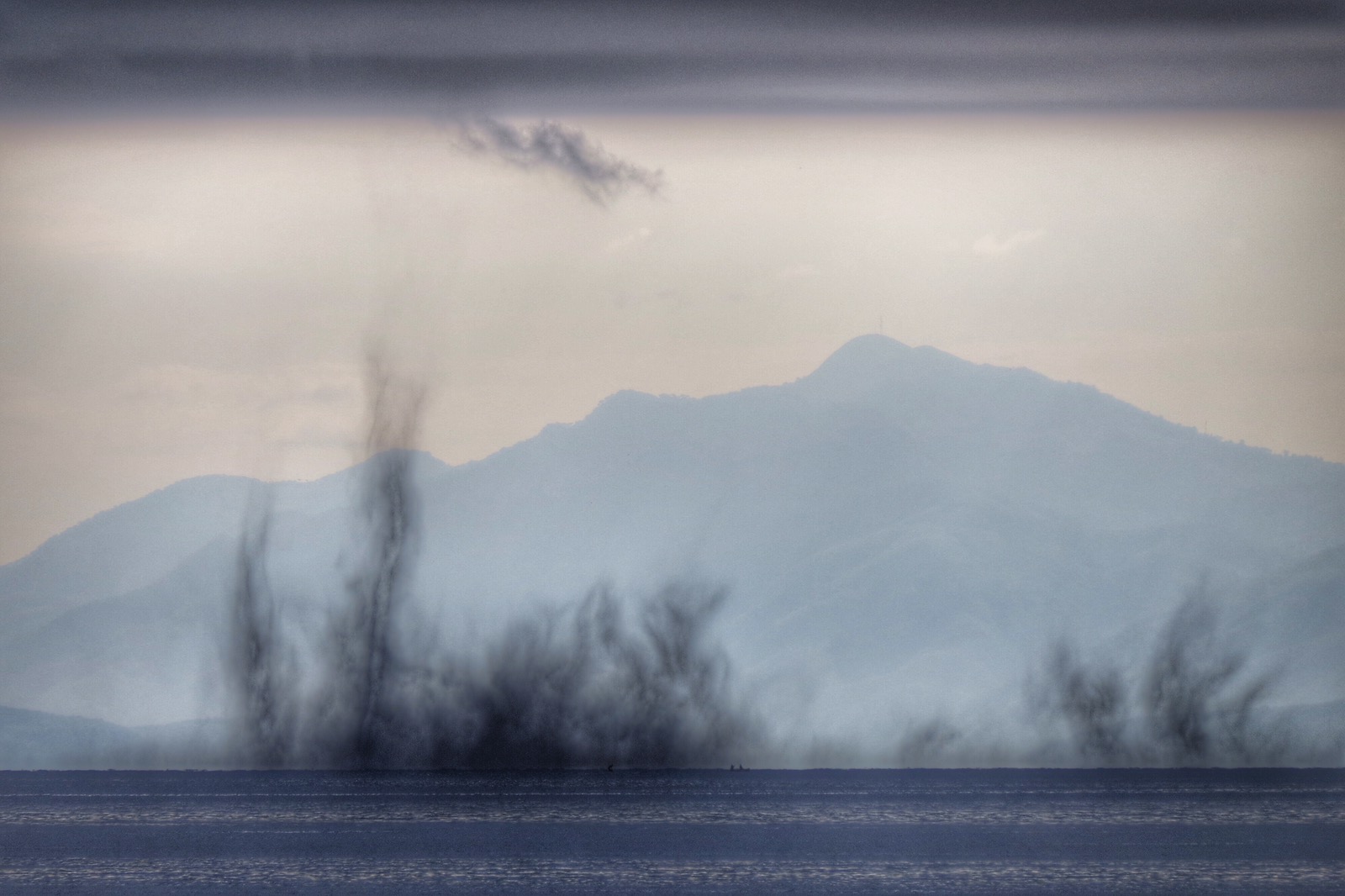
From a distance, it can seem that huge smoke plumes are rising from invisible bonfires somewhere on the surface of the lake.
Incredibly, these flies are individually no bigger than the head of a sewing pin. Each of these plumes will literally contain billions of flies and their direction is entirely dependant upon the prevailing winds. The phenomenon is seen only in 3-4 places worldwide and even then only occasionally.
The flies spawn on the lake surface (despite never touching the water itself) and the eggs sink to the bottom until ready to hatch. Then they rise, hatch at the surface and take to the air – only to commence the same cycle again over their 3-5 day life cycle.
As rare and fascinating sight as they are, in my opinion they are best observed from a distance. If they are blown onto the shore, although they don’t bite or irritate in any way, they can till make a mess of your gin and tonic.
We watched the tail end of one swarm pass by us as a tower collapsed like a Victorian pottery-factory chimney being felled by a demolition team.
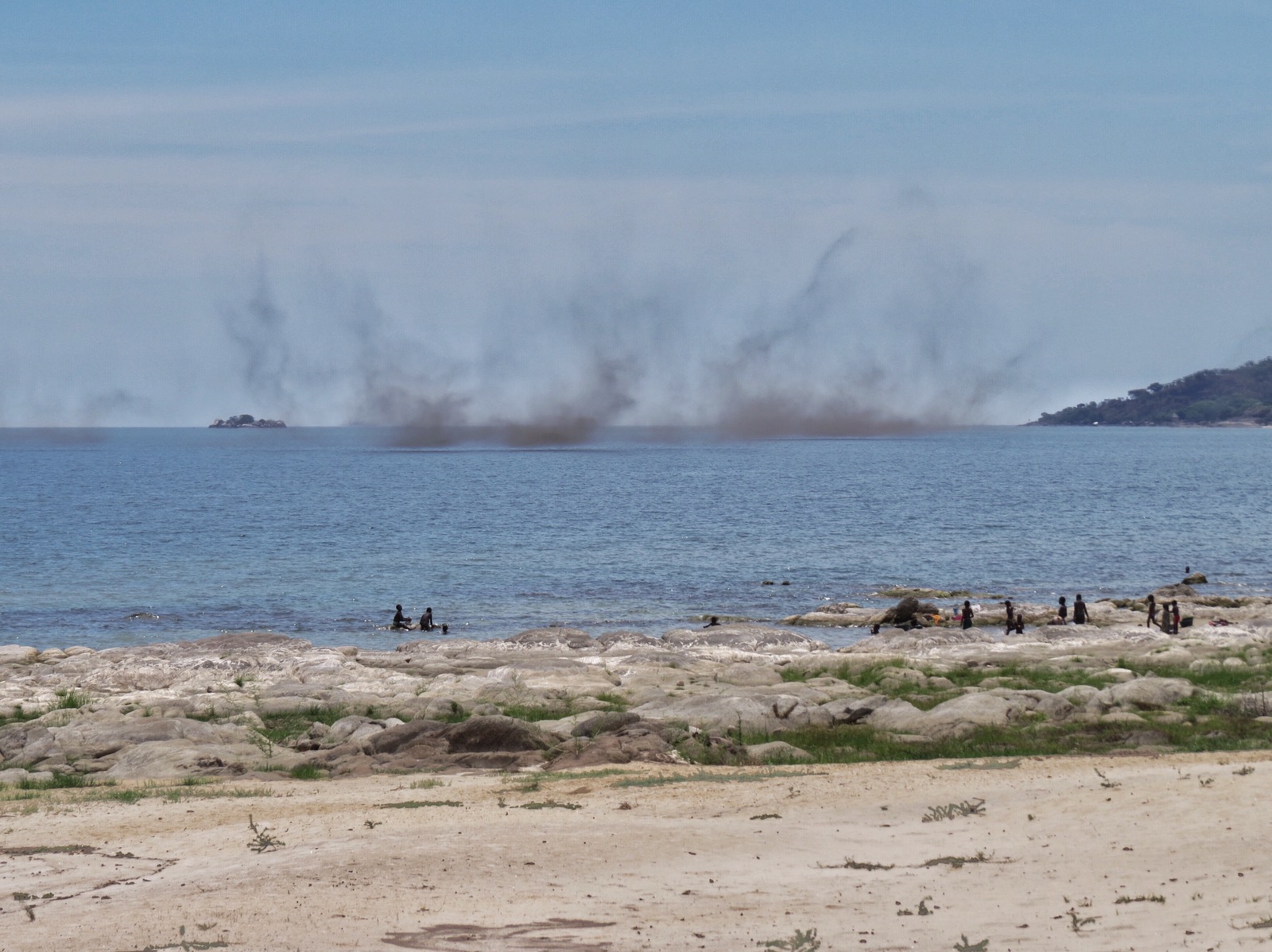
That this was only a small swarm (the tip of the iceberg?) was evident by the colour of the cloud being grey/brown rather than jet black. As it came across the bows of our beach our camp was flooded with flies – but that was just like the peripheral winds of a tornado when compared to the centre of the maelstrom.
The main part of the chimney collapsed about 500m down the lake from us, across a small village (fortunately, the main ‘schooner’ of flies passed by the other side of the headland!).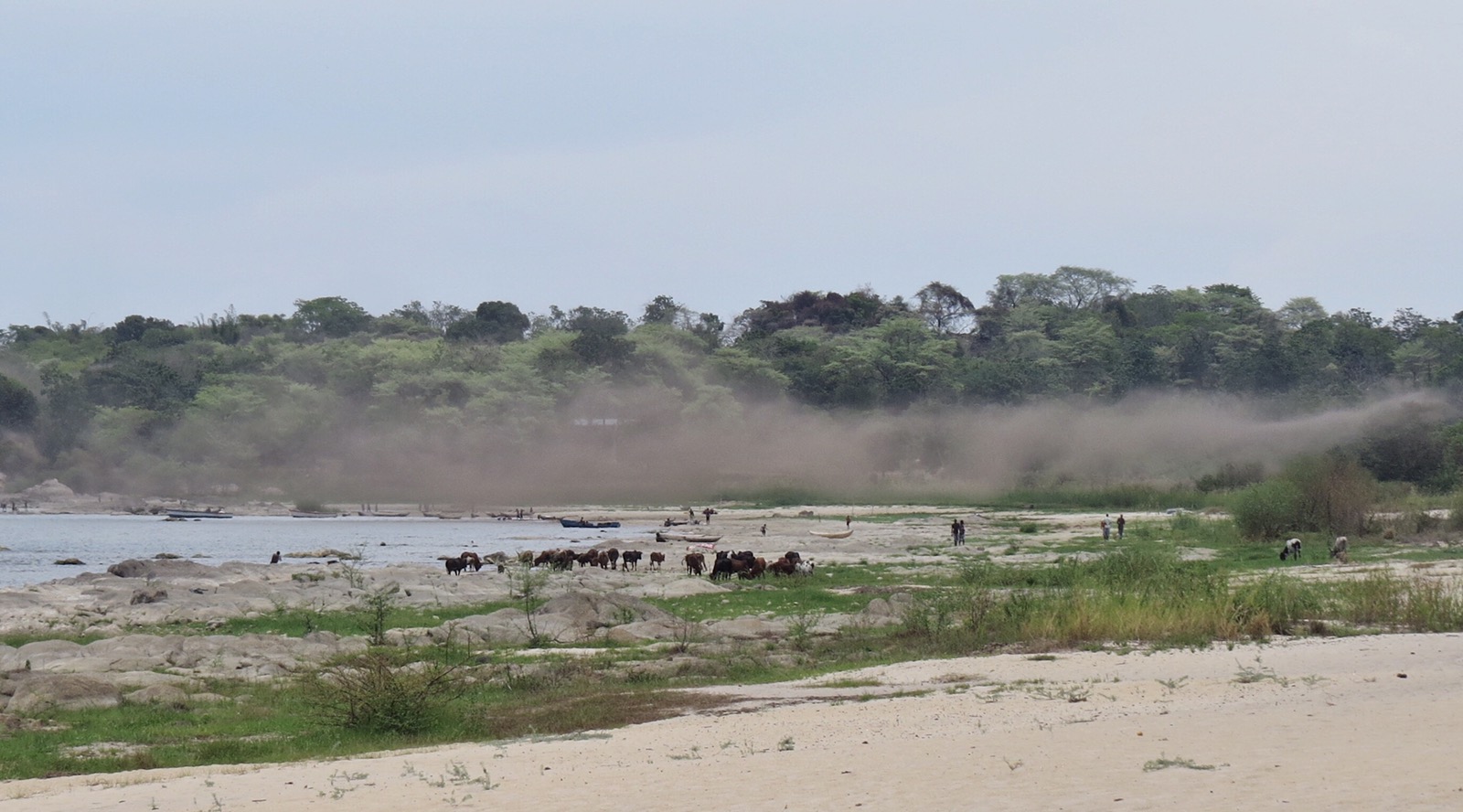
As the villagers sat at the lake doing their laundry, the flies (determined not to touch the water) took to the trees…
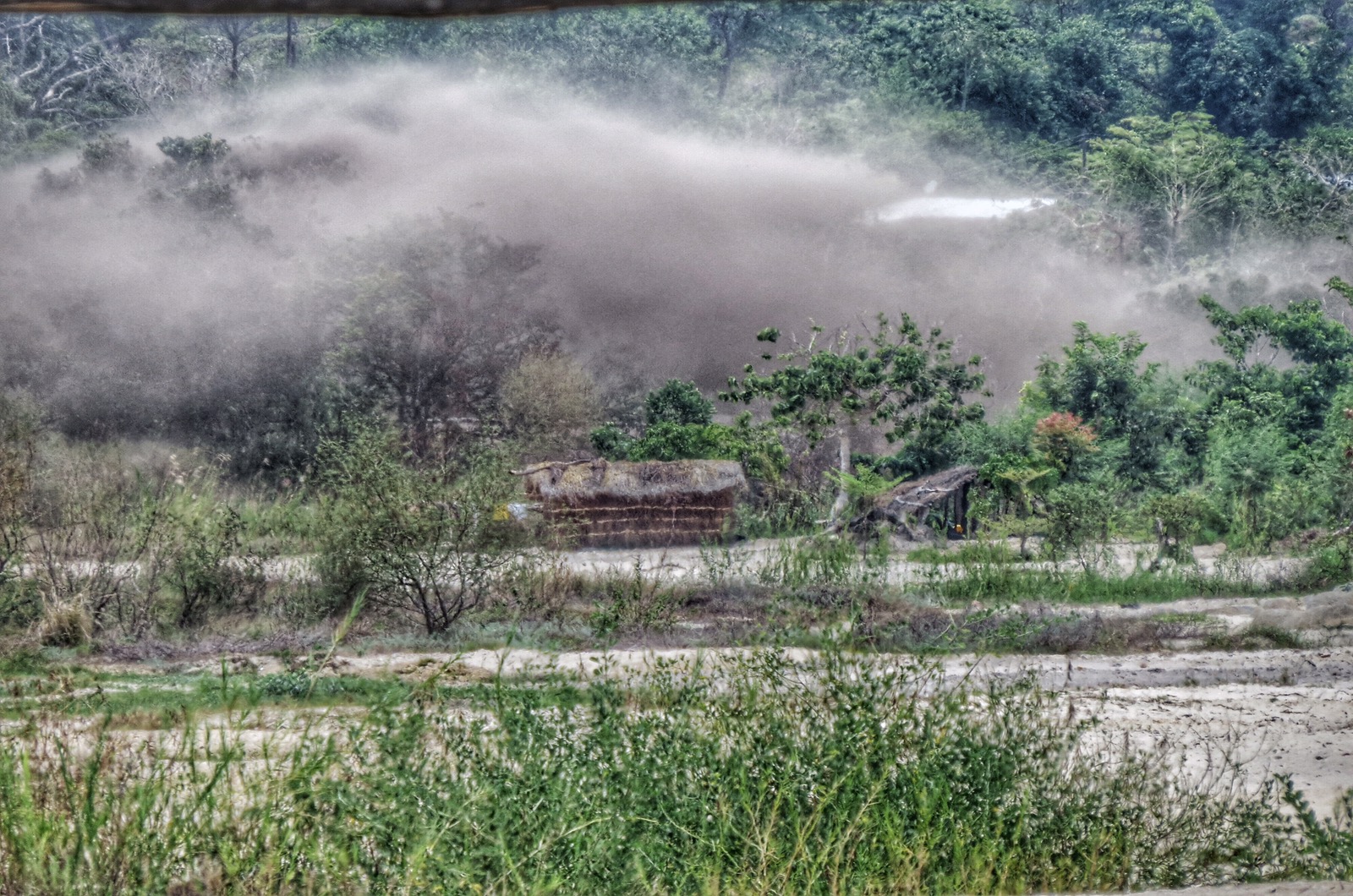
Once they’re in the trees, the grass and the thatch, they don’t leave until they are exhausted and die. Not that that upsets the locals. When the flies hit the village, all hands are on deck. Men, women and children rush out with wet plates, bags, wicker baskets, anything they can get their hands on. They wave them frantically in the air or shake them under trees and bushes so that the minute flies stick to the wet surfaces. From there they are scraped into bags or bowls and within hours will have been made into little burgers to be fried for dinner – if the kids can wait that long without eating straight from the bowl by the handful. Despite stinking like a dried-up tin of sardines, these lake flies are an enormous source of protein and are regarded as a delicious delicacy by the villagers whenever they are ‘fortunate’ enough to have them arrive.
Having previously been caught up in just the peripheral clouds, (and tried some collected in a bowl) I’ll pass!
From Chinteche Inn we had only a short hop to our most northern destination on this leg of our travels at Chitimba Camp to see our pals Carmen and Ed, the Dutch owners. We stopped off for a couple of nights in Mzuzu to stock up on shopping and stayed at a new camp called Umunthu on the fringe of the town, behind Shopright. There are two new camps opened around the town and both get excellent recommendations from people we’ve met while travelling recently.
It’s about time, the only other option in town is Mzuzuzoo, a backpackers / camp that might have had a good vibe 5-10 years ago, but these days seems to have turned into a tatty party-dive for local drinkers. Not recommended.
Umunthu deserves its good reviews. Simply set out in the grounds of owner Andrei’s garden the feel of the camp and rooms is modern, the showers are great, the camping is cheap ($5), the bar is nice and the home made burgers & pizzas are outstanding. Andrei was head chef at an upmarket Lake Tanganyika Lodge for 8 years and, although his own menu is simple, everything including the breads are made in-house. Great stuff.
The road east then north from Mzuzu winds through beautiful valleys and 1,200m high plateaus of rubber plantations before it descends again to the lake. The rubber trees stand in regimented rows for miles in every direction and the liquid rubber is still harvested by hand. A spiral cut is made in the trunk of the tree, down which the viscous natural rubber slowly runs until it drips into a teacup-sized bowl at the bottom of the spiral. There must be tens of thousands of trees on the terraces here.
With so many rubber trees, a little bit of ‘poaching’ is only to be expected I guess. As our car is heard rounding each bend, locals sprint out from the trees and start bouncing huge rubber balls on the road, trying to sell them to us. They look like a golf ball with the white outer casing stripped off – a giant skein of wound rubber collected (whist no one from the plantation is looking no doubt) from the little cups and strung out into huge threads before being wrapped round a lightweight paper mould. As the car passes they sprint back into the anonymity of the trees by the roadside.
Three hours and 150km after leaving Mzuzu we were back at Chitimba Camp, at the foot of the road up the mountain to Livingstonia. It should have been a fairly uneventful trip but unfortunately we seem to have developed an intermittent brake failure. I guess intermittent is better than permanent, but that’s not much comfort if you can’t tell whether your next braking event is going to mean that the pedal goes straight to the floor.
The decent from the plateau was particularly entertaining – a 700m drop over a very scenic 4km of switchback hairpin bends on the side of the escarpment. I rolled closely behind a heavy, crawling truck (that I would normally have overtaken at a safe point) reasoning that if the brakes failed altogether, I’d use his rear end as a buffer.
Still, that was 3 weeks ago now, just a couple of days before Christmas.
Since then, the car hasn’t moved from where we parked it when we rolled into camp.
In many ways little has changed here at Chitimba Camp. In other ways much is different.
Owners Ed & Carmen have changed little – still enjoying life in their paradise setting on the lakeshore. All but 2 of the 25 staff are the same guys we enjoyed spending time with when we ran the place for a while last year. The simple village atmosphere is the same as it has been for years.
The camp itself is changing fast though. Ed has built 2 excellent new shower / toilet blocks, a couple of additional lovely en-suite chalets, new shelters and pergolas on the beach and extended the bar / restaurant. The place really is looking great.
It’s been 39-40 degrees in the shade, hot, and stormy. Regularly 22-27 degrees overnight (not so much fun) but little rain so far.
Still, it’s great to be back.


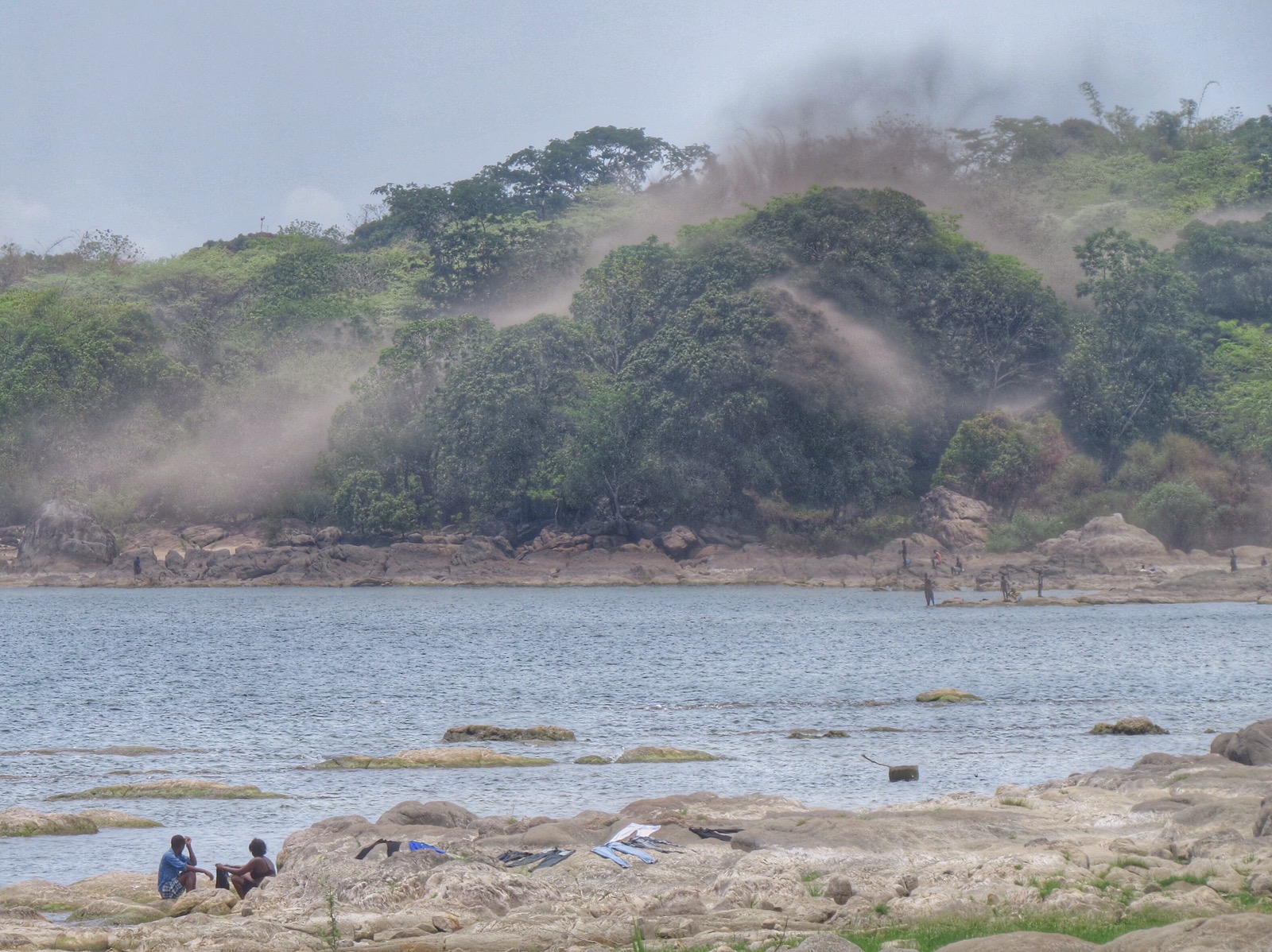
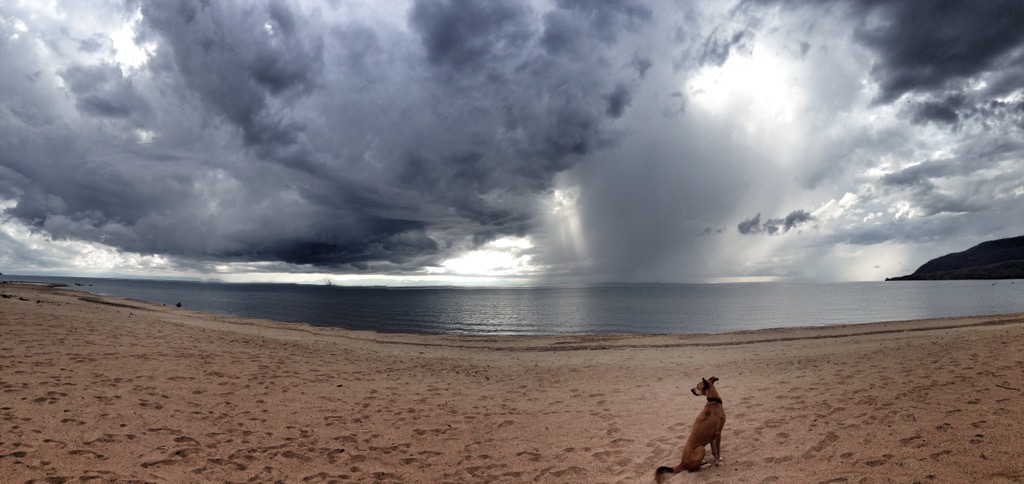

Pingback: cialis canada pharmacy
Pingback: online pharmacy amoxicillin no prescription
Pingback: rhinocort online pharmacy
Pingback: sildenafil in usa
Pingback: can you buy viagra over the counter in canada
Pingback: how to take liquid tadalafil
Pingback: best price on generic cialis
Pingback: cialis on line
Pingback: cialis pills australia
Pingback: trimethoprim/sulfamethoxazole powder withdrawl in rabbits
Pingback: valtrex cancer
Pingback: mexican nolvadex
Pingback: can you take amitriptyline and pregabalin together
Pingback: flagyl nsaid
Pingback: para que sirve la pastilla escitalopram
Pingback: ask a patient keflex
Pingback: can cephalexin capsules be opened and sprinkled on food
Pingback: gabapentin serumspiegel
Pingback: cymbalta and blood pressure
Pingback: ciprofloxacin hydrochloride ophthalmic solution 0.3 for pink eye
Pingback: neurontin side effects long-term
Pingback: liquid amoxicillin dosage for adults
Pingback: weaning off effexor
Pingback: contrave kidney stones
Pingback: can you overdose on flexeril
Pingback: depakote davis pdf
Pingback: diltiazem dosage for atrial fibrillation
Pingback: augmentin yeast infection
Pingback: flomax high
Pingback: risperidone and aripiprazole
Pingback: aspirin for stroke
Pingback: allopurinol max dose
Pingback: what are the side effects of augmentin
Pingback: celecoxib structure
Pingback: bupropion class
Pingback: baclofen addictive
Pingback: ashwagandha for women
Pingback: celexa 40 mg side effects
Pingback: pepcid vs protonix
Pingback: 1800baddrug actos
Pingback: acarbose experiment
Pingback: semaglutide tablets for weight loss
Pingback: remeron sleep dosage
Pingback: what are the side effects of venlafaxine
Pingback: synthroid wheezing
Pingback: 200 mg spironolactone
Pingback: abilify withdrawal
Pingback: cialis online pills
Pingback: buy levitra online
Pingback: can i take levitra every day
Pingback: sildenafil half life
Pingback: pharmacy online australia free shipping
Pingback: cost of 100mg sildenafil
Pingback: buy oral ivermectin
Pingback: ivermectin brand
Pingback: what is vardenafil hcl 20mg tab used for
Pingback: ivermectin price canada
Pingback: how long does it take for tamoxifen to get into your system
Pingback: cheap cipro online
Pingback: valacyclovir pregnancy dosage
Pingback: will keflex treat a sinus infection
Pingback: is metformin bad for you
Pingback: can i drink on cephalexin
Pingback: gabapentin and lyrica together
Pingback: lipitor participating pharmacy
Pingback: sildenafil or tadalafil which is better
Pingback: cialis levitra viagra
Pingback: sildenafil 100mg como tomar
Pingback: difference between sildenafil and tadalafil
Pingback: sildenafil pills
Pingback: sildenafil dose for erectile dysfunction
Pingback: para que sirve el sildenafil
Pingback: tadalafil for blood pressure
Pingback: levitra vardenafil
Pingback: canadian pharmacy levitra
Pingback: world pharmacy store discount number
Pingback: what's the difference between viagra and cialis
Pingback: online pharmacy classes
Pingback: sildenafil and tadalafil combination
Pingback: motrin and one kidney
Pingback: gabapentin mirapex
Pingback: sulfasalazine increased liver enzymes
Pingback: celecoxib multiple sclerosis
Pingback: imitrex ulcers
Pingback: elavil pharmacokinetics
Pingback: liver disease and imuran
Pingback: maxalt wafers information
Pingback: flexeril and meloxicam
Pingback: squamous cell carcinoma dog piroxicam
Pingback: baclofen rezeptfrei preisvergleich
Pingback: imdur pulmonary hypertension
Pingback: tizanidine withdrawal
Pingback: can i purchase generic toradol without a prescription
Pingback: can you take ambien with zanaflex
Pingback: periactin for irritable bowel
Pingback: cost cheap ketorolac without insurance